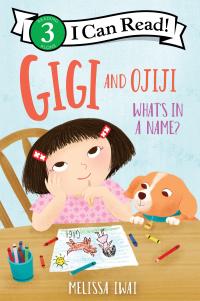
Gigi can’t wait for her mother’s father, her grandfather, to arrive from Japan to live with them. But Ojiisan isn’t at all what the biracial girl expected. How grandfather and granddaughter learn about the other is affirming and heartwarming in this easier to read tale.
Gigi and Ojiji

A young boy enjoys the open field throughout the seasons. Lyrical language and textured watercolors bring into focus the unfettered joy of nature in a “…field [that] would not, could not/be bought! or belong/to anyone./Even Emile.”
Emile and the Field
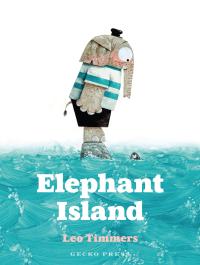
Arnold was always a seafaring elephant. Luckily, he found a small island when his boat sank. With his built-in trumpet, he called for help. Help arrives and together, animals combine efforts to make a distinctive island and create unusual friendships in this unique nautical tall tale.
Elephant Island
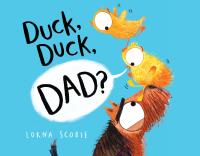
Ralph, a dog, led a quiet life until a nearby egg hatched. The duckling saw Ralph and knew he was his dad. Life was no longer quiet but filled with cuddles and chaos just as the duck’s life was with its puppy horde. Comical illustrations depict the pleasures of a huge, blended family.
Duck, Duck, Dad?
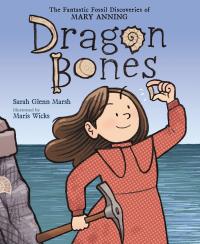
Mary loved rainy days because it was then that she would discover her treasures: fossils. Her life and work unfold in straightforward text and simple illustrations. Backmatter further details her life and what it takes to become a paleontologist.
Dragon Bones: The Fantastic Fossil Discoveries of Mary Anning
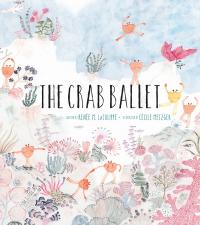
Have you ever wondered what people don’t see at the seashore? Could it be ballet? Perhaps a performance by talented crabs. Share a performance through the gently rhyming text and detailed, finely lined, gently colored illustrations. A glossary of ballet terms (for kids and crabs) is included.
The Crab Ballet

What can people learn from dogs? How to BE in the moment from waking to bedtime and through the seasons! Charming collage illustrations and straightforward text encourage readers to smell, taste, feel, and see with canine simplicity.
Being a Dog: A Tail of Mindfulness

Different trucks of different colors in different places doing different things are presented in appealing, staccato language and animated illustrations. Only the final pages reveal that these are a child’s toys as they honk! and vroom! off the page.
Trucks on Trucks

Rosa and her friends not only enjoy the rain, but they also study it! Simple experiments and childlike illustrations invite readers (and their grownups) to do the same as do others in the series (such as Rosa Explores Life Cycles (opens in a new window))
Rosa Explores the Water Cycle

Amid 99 small illustrations of various objects ranging from airplanes to cakes to potatoes, readers are asked to find the one that is different. Even older readers will find the search for the outlier fun and challenging. Happily, for adults, there is a key on the final spread.
99 Tomatoes and One Potato

Everyday objects and activities come together to help build a young child’s vocabulary in this sturdy, large format book. Familiar scenes are presented in simple illustrations with labeled photographs on a different colored background to extend language and present a search-and-find activity.
Merriam-Webster’s 150 First Words

The sun is up and so is the baby along with the dog, the teddy and finally, mama and papa. When the moon is up, everyone is sleepy except for the baby; that is until the baby falls asleep. Families with young children will appreciate the humor and the simple, playful illustrations.
I’m Up!

Count along with the families as they make dumplings from their own culture and share them as a community. The rhyming tale can be shared on several levels with children of various ages, from the youngest to cooks who want to try their hand at the recipes included.
Dumpling Day

Drip, a drop of water, travels over earth and air to introduce young readers to the water cycle. Simple illustrations with a die-cut add interest while complementing the simple text.
Drip

Each bird makes its own sound as the day begins. Bold, colorful images and straightforward language encourage joining the bird song from chirps to warbles.
Chirp!

Black activist Opal Lee had a vision of Juneteenth as a holiday for everyone. This true story celebrates Black joy and inspires children to see their dreams blossom. Growing up in Texas, Opal knew the history of Juneteenth, but she soon discovered that many Americans had never heard of the holiday. Join Opal on her historic journey to recognize and celebrate “freedom for all.”
Opal Lee and What It Means to Be Free: The True Story of the Grandmother of Juneteenth

An Indigenous legend about how four extraordinary individuals of dual male and female spirit, or Mahu, brought healing arts from Tahiti to Hawaii. In the 15th century, four Mahu sail from Tahiti to Hawaii and share their gifts of science and healing with the people of Waikiki. The islanders return this gift with a monument of four boulders in their honor, which the Mahu imbue with healing powers before disappearing.
Kapaemahu

Punky Aloha is a Polynesian girl who carries her culture in her heart and in everything she does. Punky loves to do a lot of things — except meeting new friends. She doesn’t feel brave enough. So when her grandmother asks her to go out and grab butter for her famous banana bread, Punky hesitates. But with the help of her grandmother’s magical sunglasses, and with a lot of aloha in her heart, Punky sets off on a big adventure for the very first time.
Punky Aloha

When five-year-old Luli joins her new English as a Second Language class, the playroom is quiet. Luli can’t speak English, neither can anyone else. That’s when she has a brilliant idea to host a tea party and bring them all together. Luli removes her teapot, thermos, and teacups from her bag and calls out “Chá!” in her native Chinese. One by one, her classmates pipe up in recognition: in Russian, Hindi, Turkish, Persian, Arabic, and Spanish, Portuguese, and Swahili. Tea is a tasty language they all know well, and it gives them a chance to share and enjoy each other’s company.
Luli and the Language of Tea

When a young boy and his mother travel overseas to her childhood home in Korea, the town is not as he imagined. The boy feels like an outsider — until they visit the river where his mother used to play, and he sees that the spirit and happiness of those days remain. Told through a child’s-eye view, the story honors the immigrant experience and the timeless bond between parent and child, past and present.
Mommy’s Hometown

Sunny is the grandmaster’s daughter. She sweeps the floors, waters the plants, and practices with her nunchucks — sometimes she even makes mistakes! And she teaches other young students how to kihap (a spirited yell). When their kihaps grow loud and bold enough to shake the mountains, Sunny leads her friends in defending the dojang against two mythical tigers and a sapphire-colored dragon … or perhaps that’s just in their imaginations.
The Grandmaster’s Daughter

A young immigrant from South Korea finds community and friendship in an apartment house filled with other newly arrived kids. When Jae looks out the window of his new home, he wishes he could still see his old village, his old house, and his old friends. Jae just arrived from South Korea and doesn’t even speak the new language. Yet, he soon meets a girl with a colorful bird perched on her shoulder. Rosa knows just how Jae feels and the two become fast friends. Not only does Rosa show Jae his new neighborhood but she shows him how his imagination can bring back memories of his old home.
Rosa’s Song

A tender ode to fathers and to the many families working behind shop counters. Juna enjoys helping her father (her Appa) in their dry-cleaning shop on Saturdays. It’s their special time together. One day Juna sees a customer yelling at Appa about a lost jacket. Juna has never seen her father look so worried and becomes determined to help. She sets off on a magical journey in search of the jacket, and along the way meets remarkable animals that show her the different ways that fathers care for their young.
Juna and Appa

Dayeon wants to be a haenyeo just like Grandma. The haenyeo dive off the coast of Jeju Island to pluck treasures from the sea — generations of Korean women have done so for centuries. To Dayeon, the haenyeo are as strong and graceful as mermaids. And when Grandma suits up for her next dive, Dayeon grabs her suit, flippers, and goggles. A scary memory of the sea keeps Dayeon clinging to the shore, but with Grandma’s guidance, Dayeon comes to appreciate the ocean’s many gifts.
